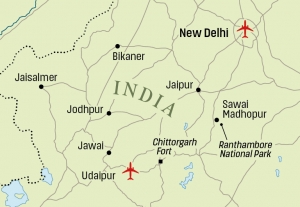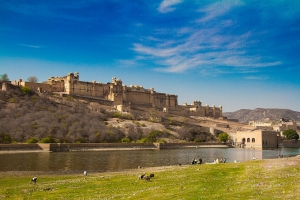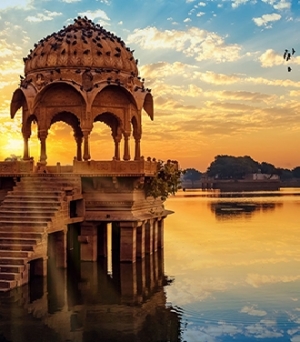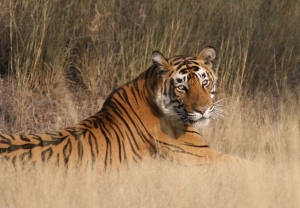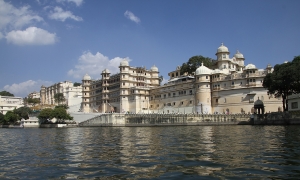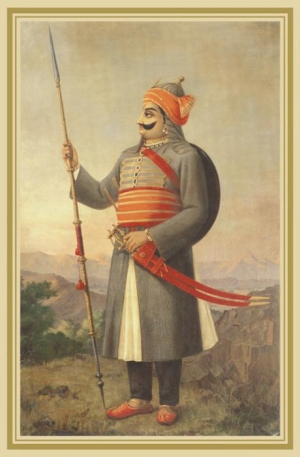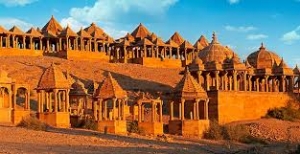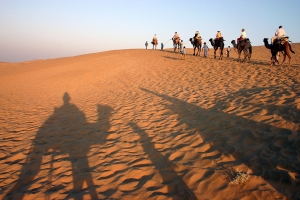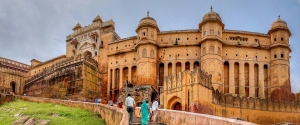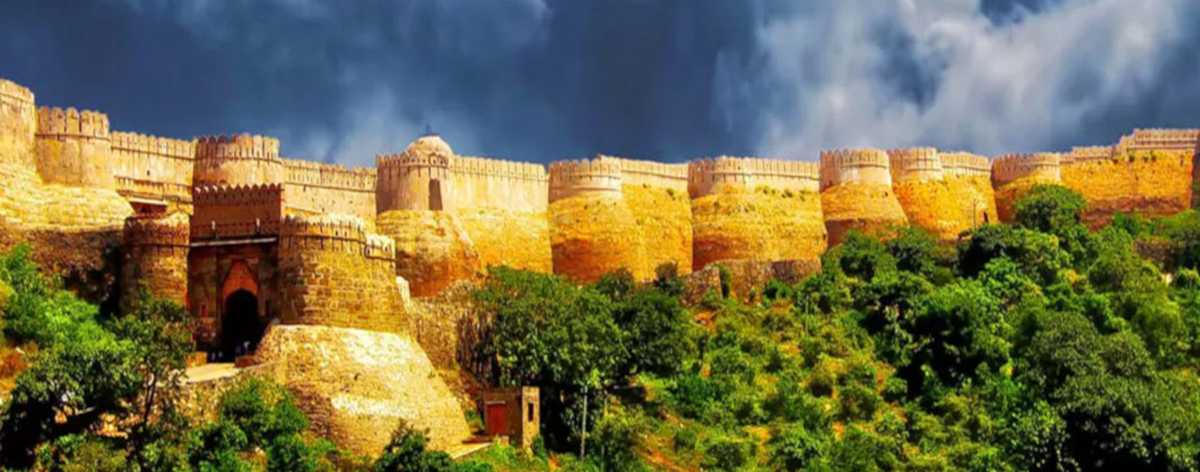
To be confirmed
Tour Introduction
A tour of Rajasthan, land of kings, bards, minstrels and enchanting folklore. A land like no other, its history stretches back to the Bronze Age Indus Valley civilisation of 2,500 BC and forward to that of the great Moghuls, the British Empire and modern independent India. It ranges from the sandy wastes of the Thar desert to the lush foliage of tiger reserves and bird sanctuaries, from the haunting beauty of its temples to its forts and palaces and its simple earthen villages. We shall look at the inheritances of the rulers, the soldiers, the priests, the merchants and the adventurers who shaped this magnificent land, travelling by coach, by train, by air, by camel and staying in the palaces that have been sympathetically converted into excellent hotels.
On this tour we make long journeys by road and rail to see the best of this huge state. Travel in the area is an adventure and will take us to places not frequently visited by most tourists. A certain degree of patience is required with the challenges of distance but the rewards are more than worth it.
Background
Rajasthan is a rich palimpsest of historical and cultural influences having come under the sway of an astonishing number of dynasties through its long history. By the 3rd century BC it was under the rule of Ashoka, the last Mauryan emperor, and this was followed by Bactrians (Indo-Greeks), Indo-Scythians (Shakas), Guptas, Hephthalites (Hunas), and finally by the 7th century AD the Rajputs.
For the next 400 years the area was contested by rival Rajput clans which carved out independent kingdoms. In the late twelfth century Muslim armies encircled Rajput rulers in Rajasthan but never succeeded in subduing them. By the sixteenth century Rajput power was at its zenith but an invasion by the Mughal emperor Babur in the 1520s brought a new and dynamic rule to the area. After the death of the last Mughal emperor Aurangzeb in 1707 there was a brief resurgence of Rajput power but within a hundred years the area fell under the hegemony of the Marathas of west-central India and then the British who organised the Rajput states into the province of Rajputana.
Indian independence in 1947 ushered in the gradual integration of the Rajput states into a single entity and by 1950 Rajput princes relinquished their political powers under a unified state of Rajasthan.
Highlights
- Heritage, 4* and one 5* hotels
- Enjoy the best of Rajasthan’s historical and natural beauty
- Visit the amazing forts of Jaisalmer, Junagarh, Mehrangarh and the enormous complex at Chittorgarh, the largest in India
- Visit the historic cities of Delhi, Jaipur, Jodhpur, Jaisalmer and Bikaner
- Participate in a tiger safari at the stunning Ranthambore National Park and spot leopards at Jawai
- Experience an unforgettable camel safari in the beautiful Thar desert
- Optional hot air balloon trip available at Jaipur
What's Included
- Return flights from London (optional)
- Expert historians throughout providing a daily variety of talks, presentations and Q&A
- Dedicated Tour Manager
- Dinner parties hosted by your expert historians and tour manager
- The company of like-minded travelers
- Helpful and friendly travel advice
- Meals as indicated in the itinerary
- Two drinks i,e wine or beer at each dinner and a welcome drink on first evening
- Entrance fees for sites included in itinerary
- Tour information booklet
- Modern, comfortable, air-conditioned coach
Itinerary
Day 0: Outward Travel
Fly London to New Delhi arriving the morning of day 1.
Day 1: Lutyen’s Delhi
Arrive Indira Gandhi Delhi airport no later than 09:30 (perhaps consider arriving a day earlier and spending the night at Delhi airport – contact us for options). This morning, we embark on a guided tour of New Delhi, the creation of the celebrated architect Sir Edwin Lutyens, with its enormous government buildings and graceful India Gate memorial. Late afternoon we catch the August Rajdhani Express train to the historic city of Sawai Madhopur for two nights. (L, D).
Day 2: Wildlife Safari
A full day spent on safari in the Ranthambore National Park, home to bear, sambar, chital, langur monkeys and hopefully the park’s most famous denizen, the Royal Bengal Tiger, among the biggest wild cats in existence. (B, L, D).
Day 3: Jaipur
Travel by coach across the wild Rajasthani countryside to the city of Jaipur, capital of Rajasthan, and known as the ‘Pink City’ after the painstaking painting of its buildings in 1876 to welcome the Prince of Wales: we spend the afternoon exploring the remarkable city. one of India’s finest, to marvel at the magnificent regal architecture, fit for Maharajas cities. Check-in to Jaipur our hotel for two nights. (B, L, D).
Day 4: Amber Fort
Visit the imposing Amber Fort, built by the Raja Man Singh from sandstone and white marble in the early 1600s, and the Jaigarh Fort which houses what was once the largest canon in the world. There will be some free time for personal exploration or perhaps you might consider an optional later afternoon hot air balloon trip. (B, L, D).
Day 5: Chittorgarh Fort
An early start today when we take the short flight (55 minutes) to Udaipur. Visit Chittorgarh Fort, a UNESCO World Heritage site, and the largest fort complex in India with 65 historic structures to admire. The hill was fortified from the 8th century and was the seat of the Rajput rulers of the area. It was besieged many times and captured and sacked in 1303, 1535 and 1568, the latter by the Moghul emperor Akbar the Great. Check-in to our Udaipur hotel for two nights. (B, L, D).
Day 6: Udaipur
Explore this spectacular lake city including the City Palace, the largest palace in Rajasthan and the seat of the Maharana of Mewar, the seventy-sixth scion of the family that ruled here from the 8th century and from where resistance to the Mughal expansion of Akbar the Great was organised in the 16th century. A relaxing evening boat trip on Lake Pichola provides a comfortable finale to this remarkable day. (B, L, D).
Day 7: Leopard Safari
We leave Udaipur and spend the morning travelling by coach to the amazing Jawai region, with its pleasant climate, vivid landscapes and spectacular wildlife which includes different species of birds, sloth bears and hyenas. But it is the remarkable leopards that we have come here to see and the rest of the day is spent on a fantastic leopard safari. Hotel in Jawai – 1 night. (B, L, D).
Day 8: Jodhpur
From Jawai we travel by coach to Jodhpur, set in the stark terrain of the Thar desert, and known as the ‘Blue City’ due to the dominant colour scheme of its buildings. The city was founded by the Rajput Rao Jodha in 1459 and was the capital of the Mewar kingdom. We visit the huge Mehrangarh Fort through the original Loha Pol gate which still has the handprints of the last royal widows to commit suttee (sati) on their husband’s funeral pyre in 1843. Our day continues with an informative tour of the old city where we marvel at the city’s distinct and vibrant cultural identity. Hotel in Jodhpur – 1 night. (B, L, D).
Day 9: Jaisalmer
Today we make the stimulating and adventurous journey through the beautiful Thar desert to the captivating city of Jaisalmer, a gigantic castle rising from the sandy plains. Built in 1156 by a Bhati Rajput, whose family ruled right up to Indian independence in 1947, it was a major hub on the old Silk Road trade route between China and the West. Check-in to our Jaisalmer hotel for two nights. (B, L, D).
Day 10: Thar Desert
We spend the morning visiting the fantastic Jaisalmer fort, one of few still occupied, with a quarter of the old town’s population living in the fort complex. After lunch we embark upon a fabulous camel trek in the Thar Desert where we experience the dramatic scenery and magical atmosphere of this truly stunning landscape. (B, L, D).
Day 11: Bikaner
We travel by coach across the desert this morning to Bikaner, an important oasis settlement on the route between Central Asia and the coast of Gujarat and founded in 1488. Like Jaisalmer it was a caravan stop on the Silk Road and made its fortune by hiring camels to the British for the First Afghan War (1838-1842). In the afternoon we visit Junagarh Fort, built in 1589-1593 by a general in the Moghul army of Akbar the Great. A descendant, Maharaja Sir Ganga Singh, commanded the Bikaner Camel Corps, a unit of Imperial Service troops that fought for the British in the Boxer Rebellion in China in 1900, against the uprising in Somaliland in 1902-1904, and in Egypt in the First World War. At the Suez Canal in 1915 the Corps routed the opposing Turkish forces in a camel cavalry charge. The Corps also fought in the Middle East in the Second World War, when it was supported by a camel-mounted artillery battery. Hotel in Bikaner for one night. (B, L, D).
Day 12: Return to Delhi
After a late morning check-out we return by train to Delhi where we spend the final night of the tour. (B, L, D).
Day 13: Home
Return flights or perhaps extend your stay in India. (B).

